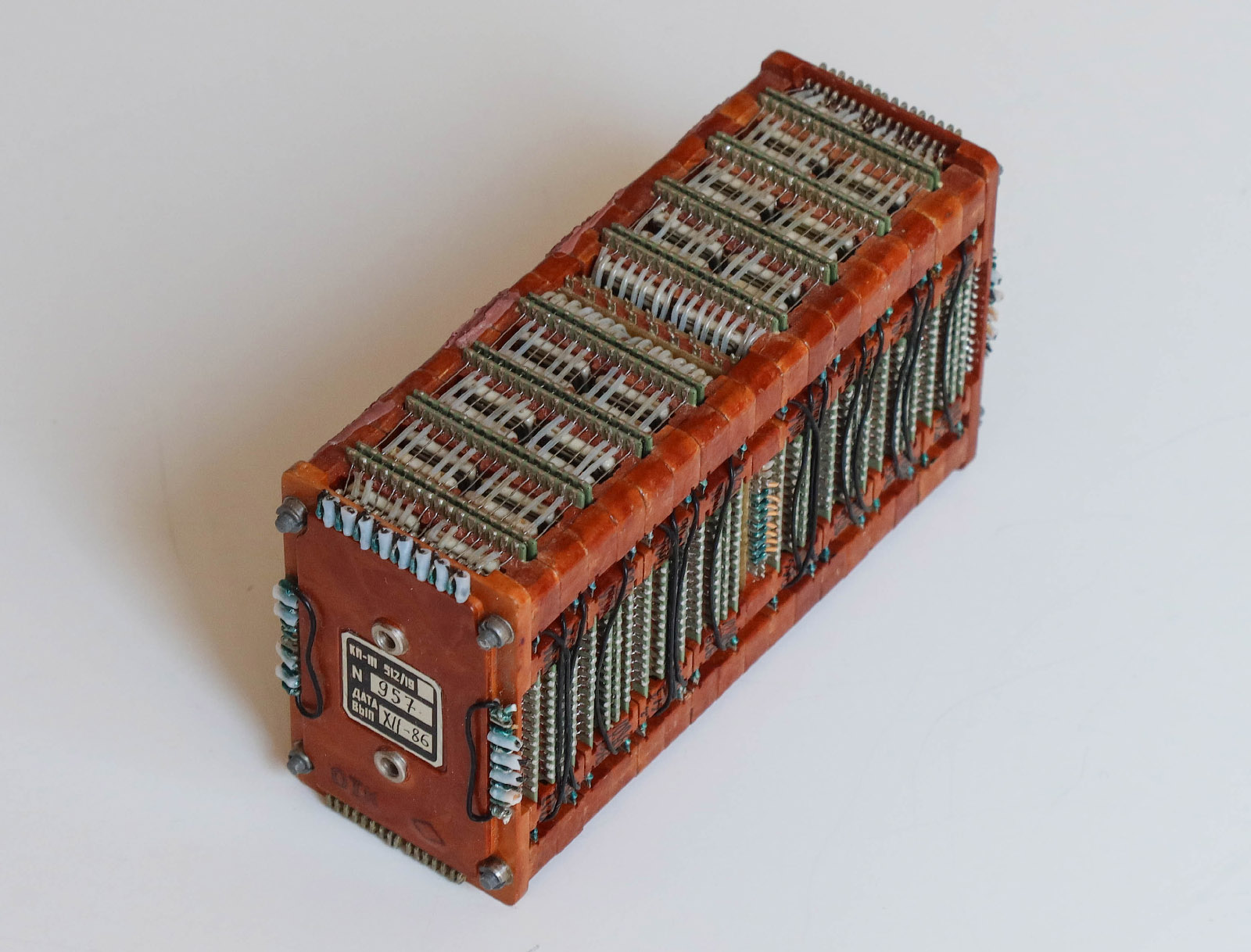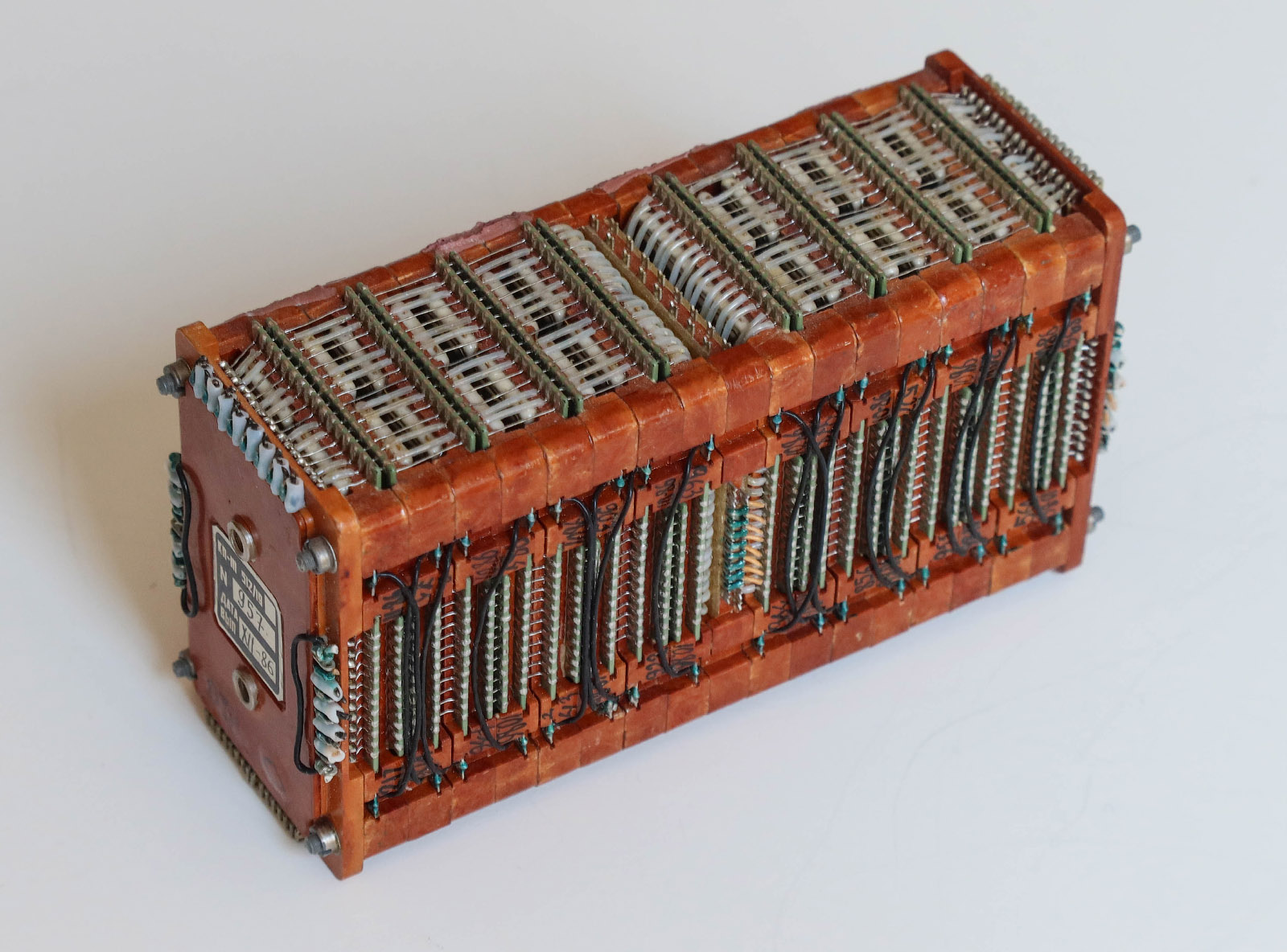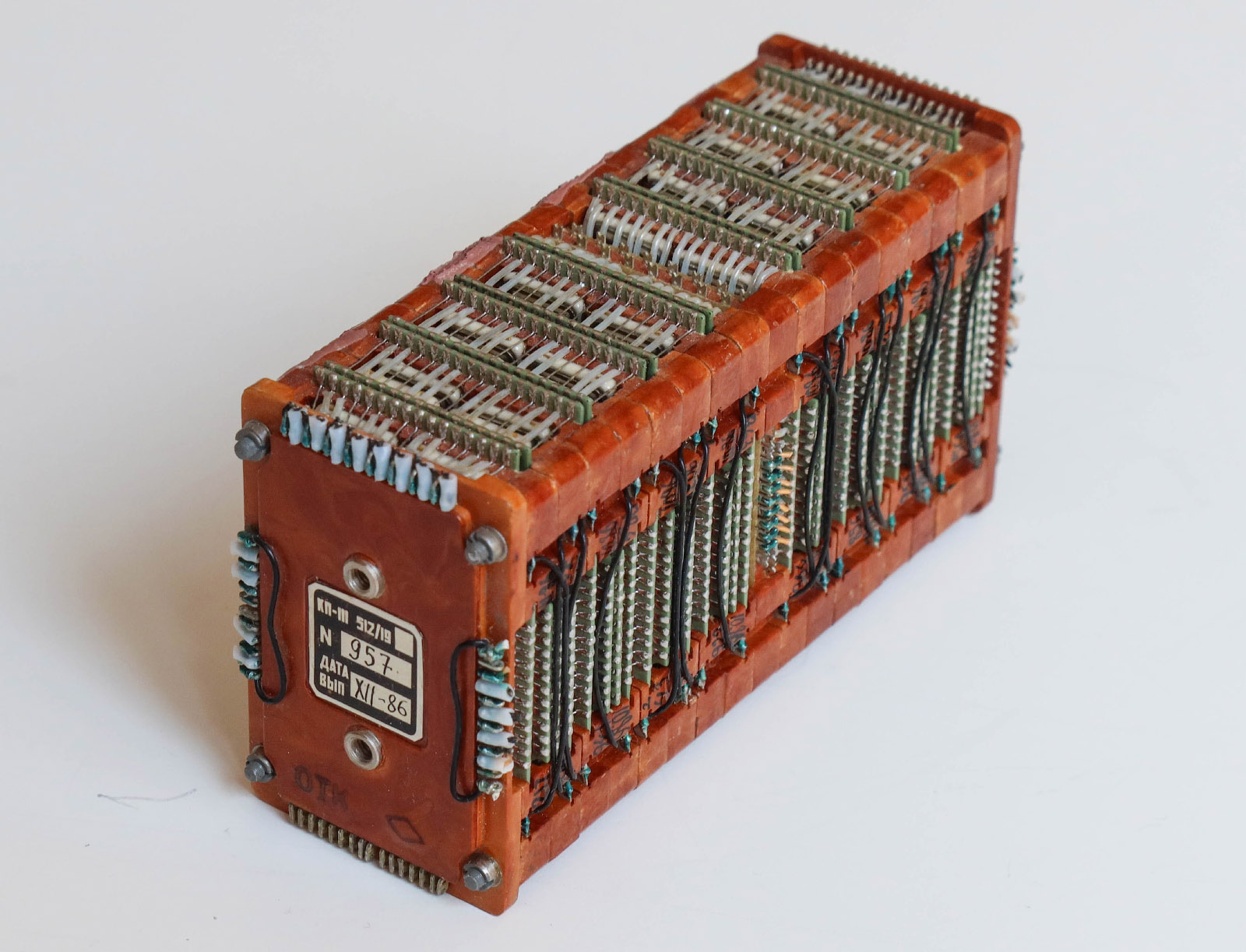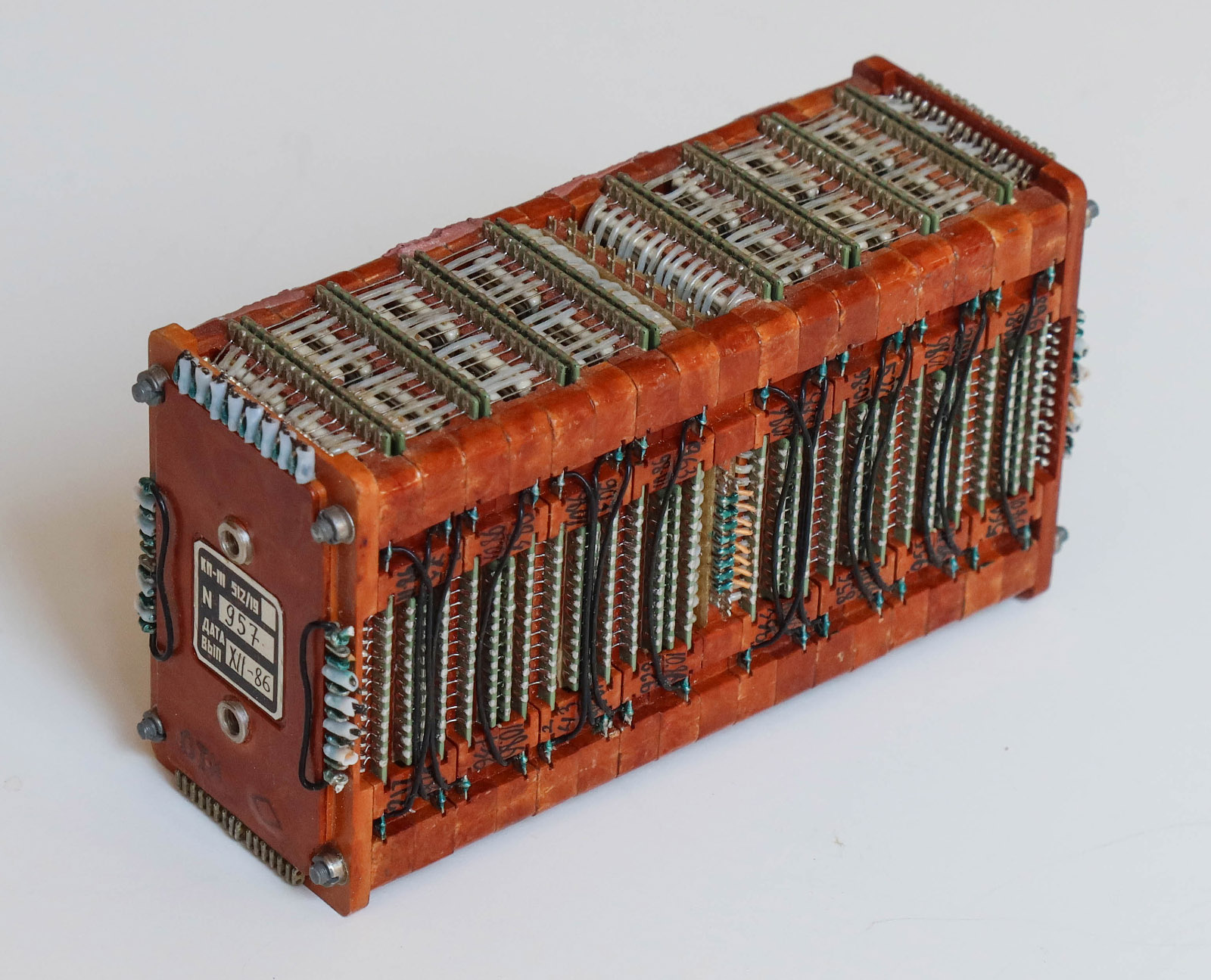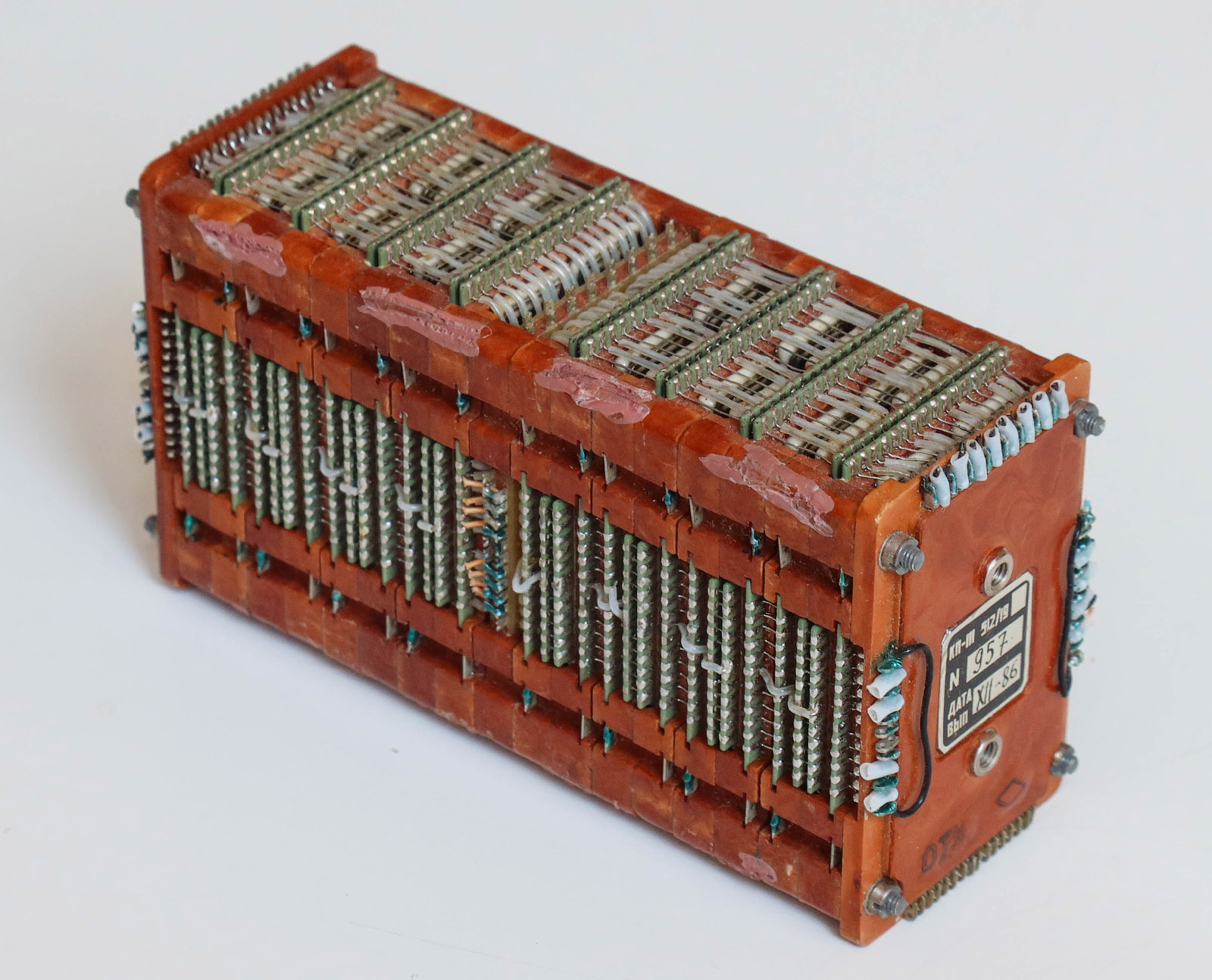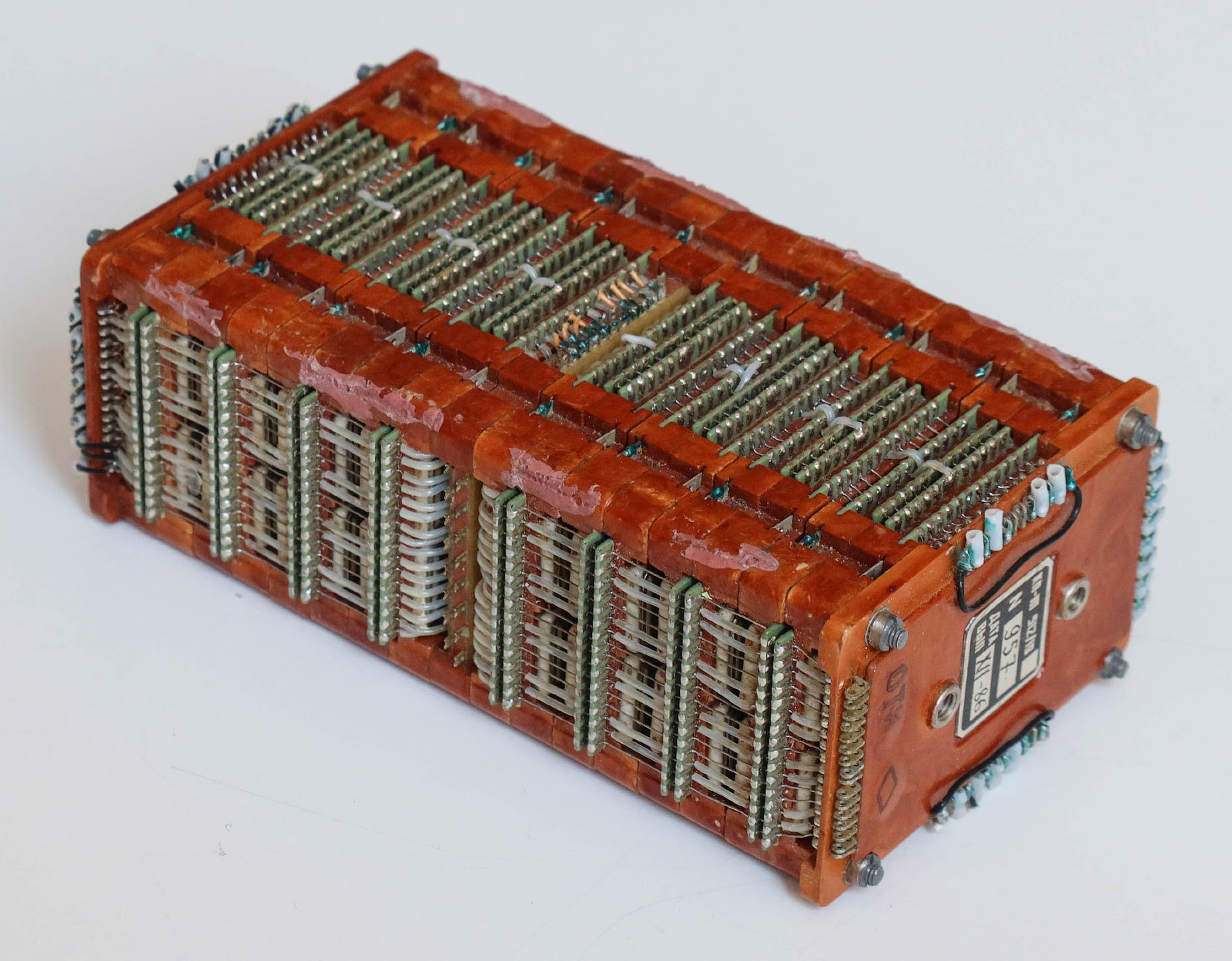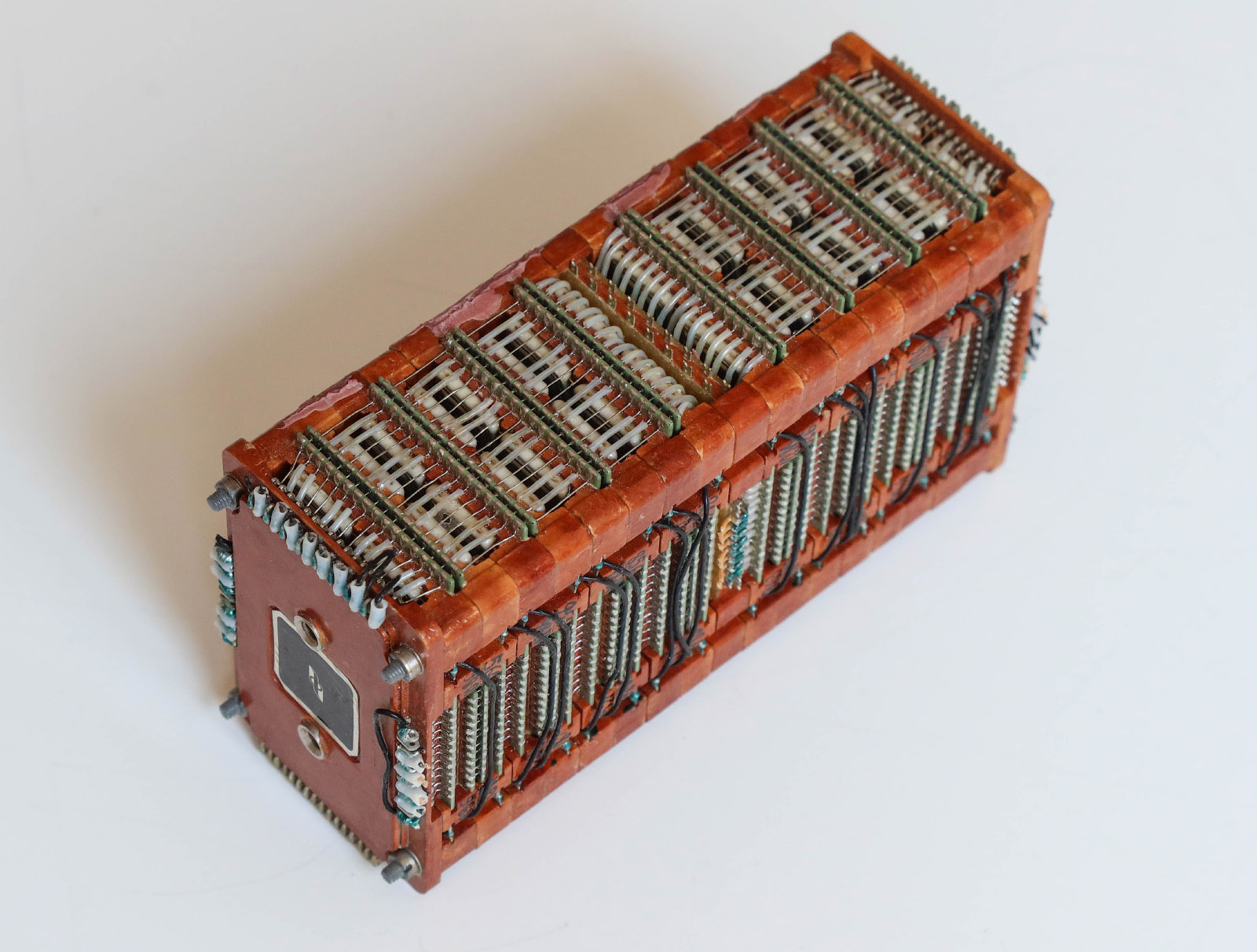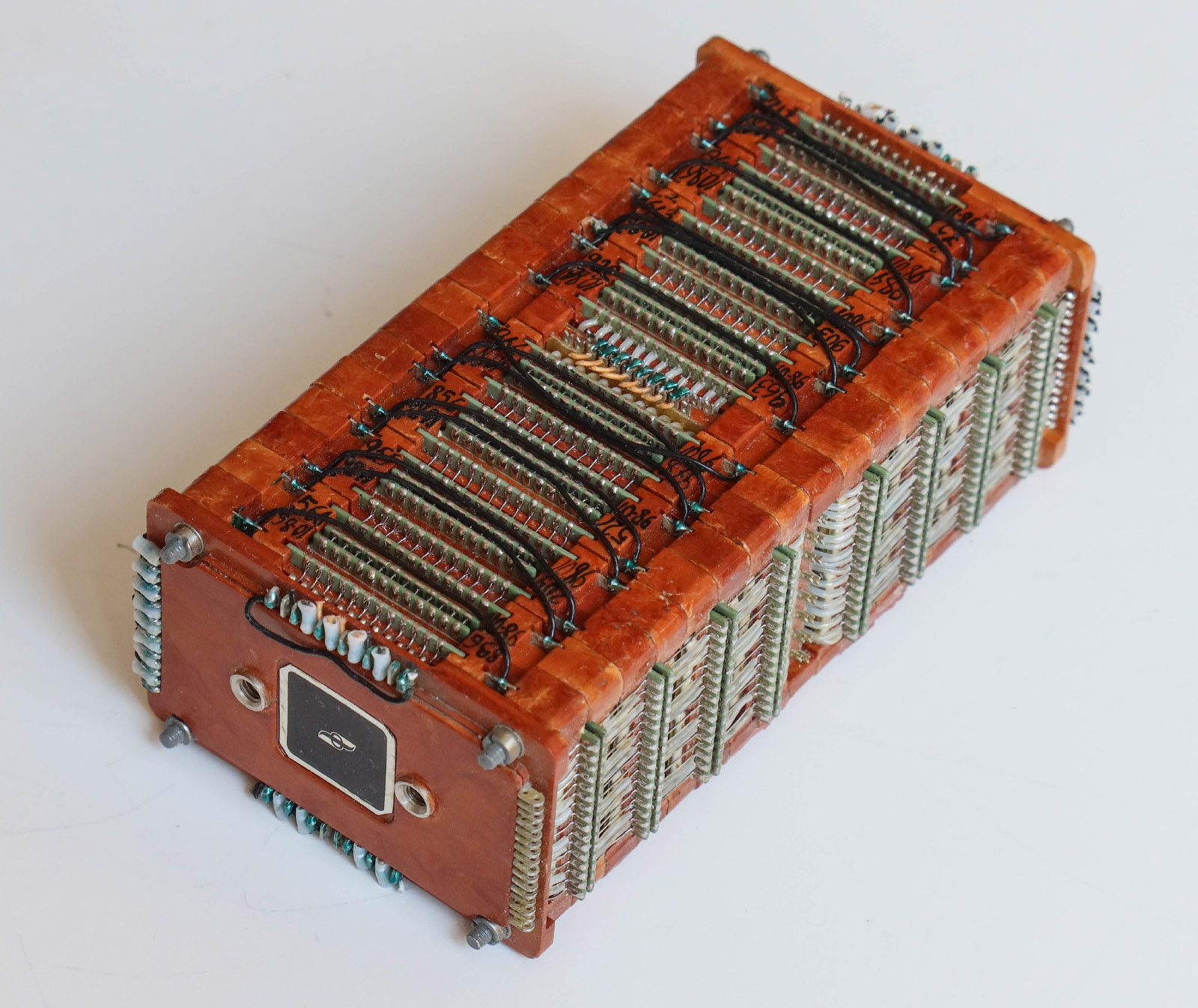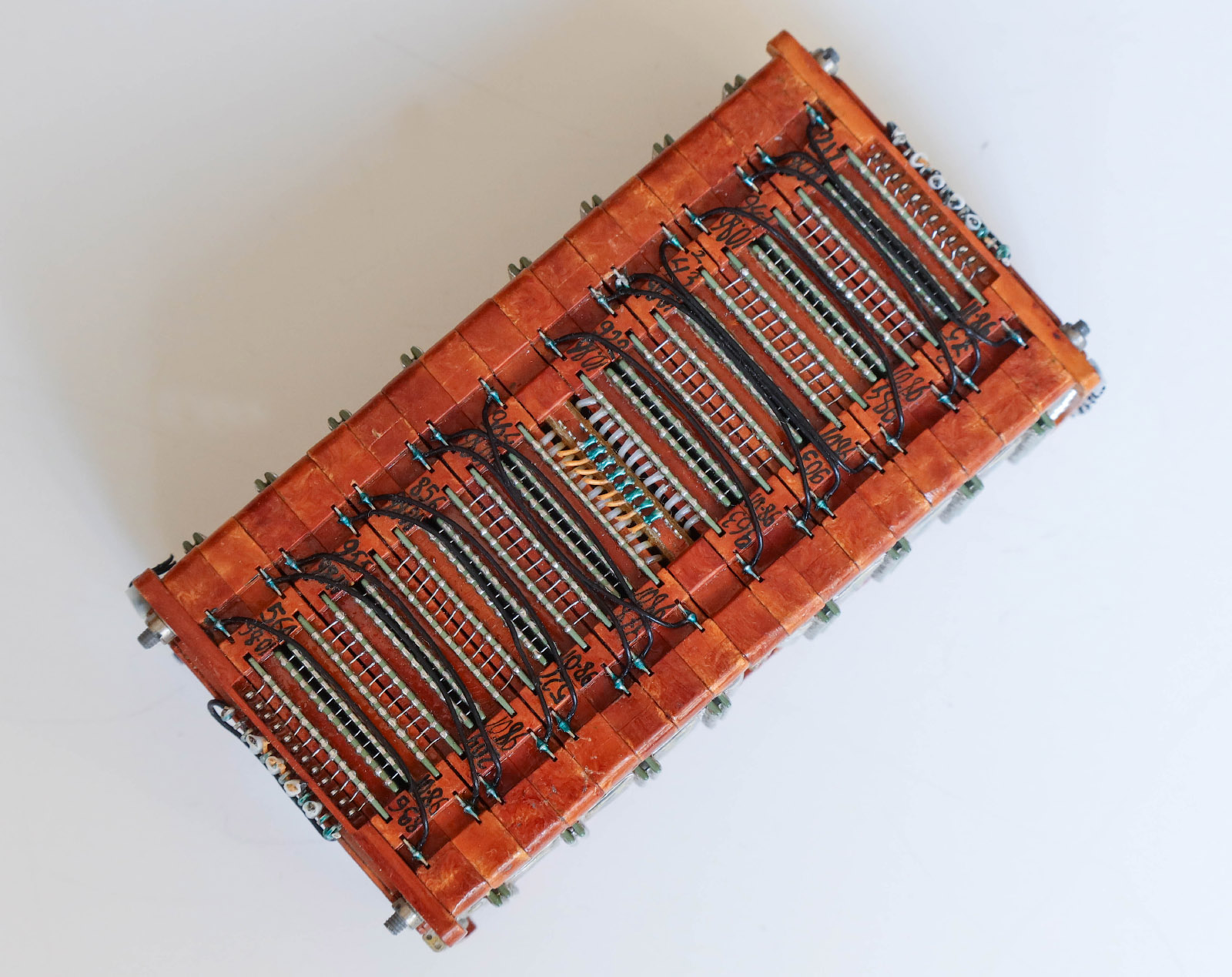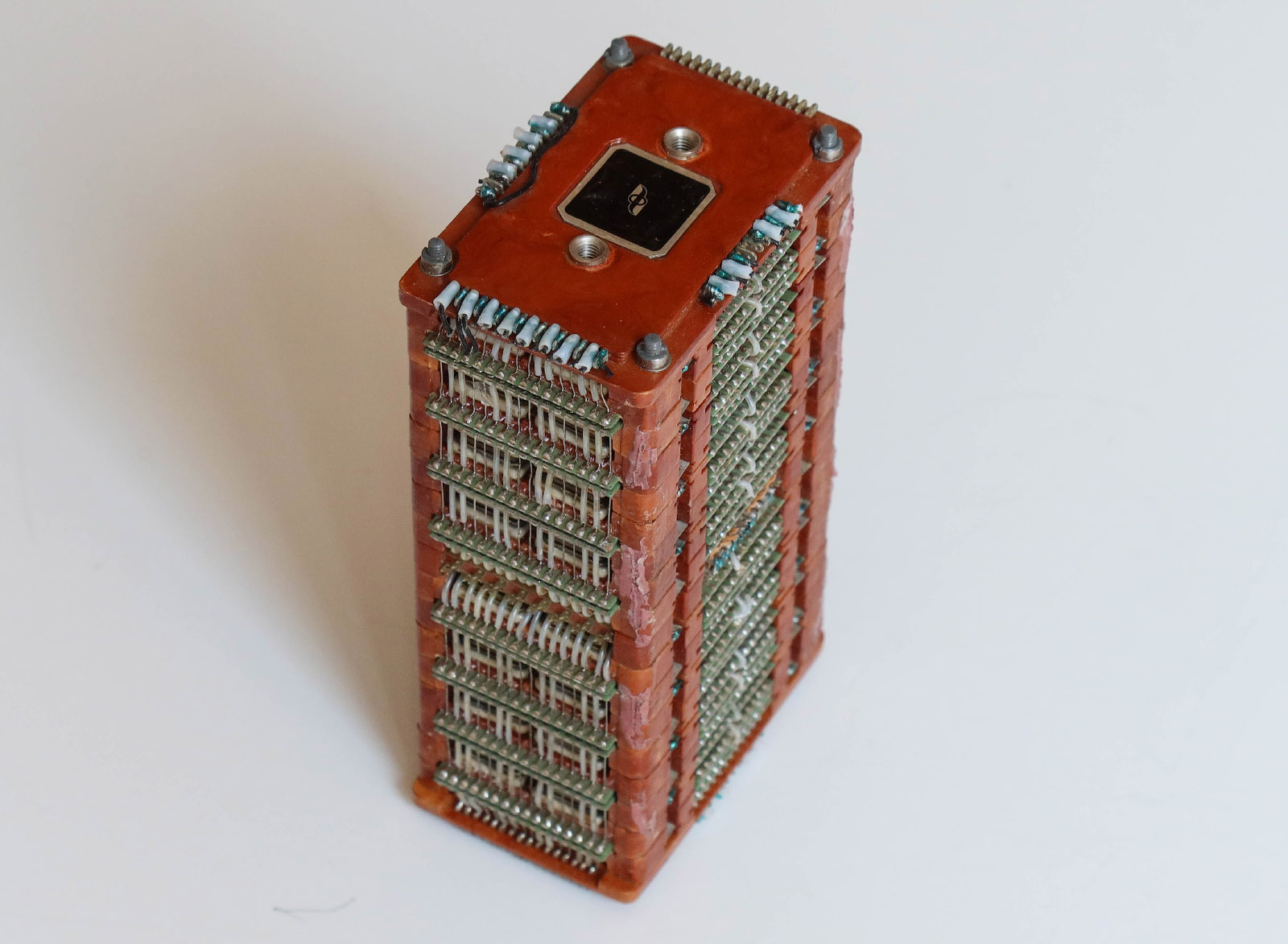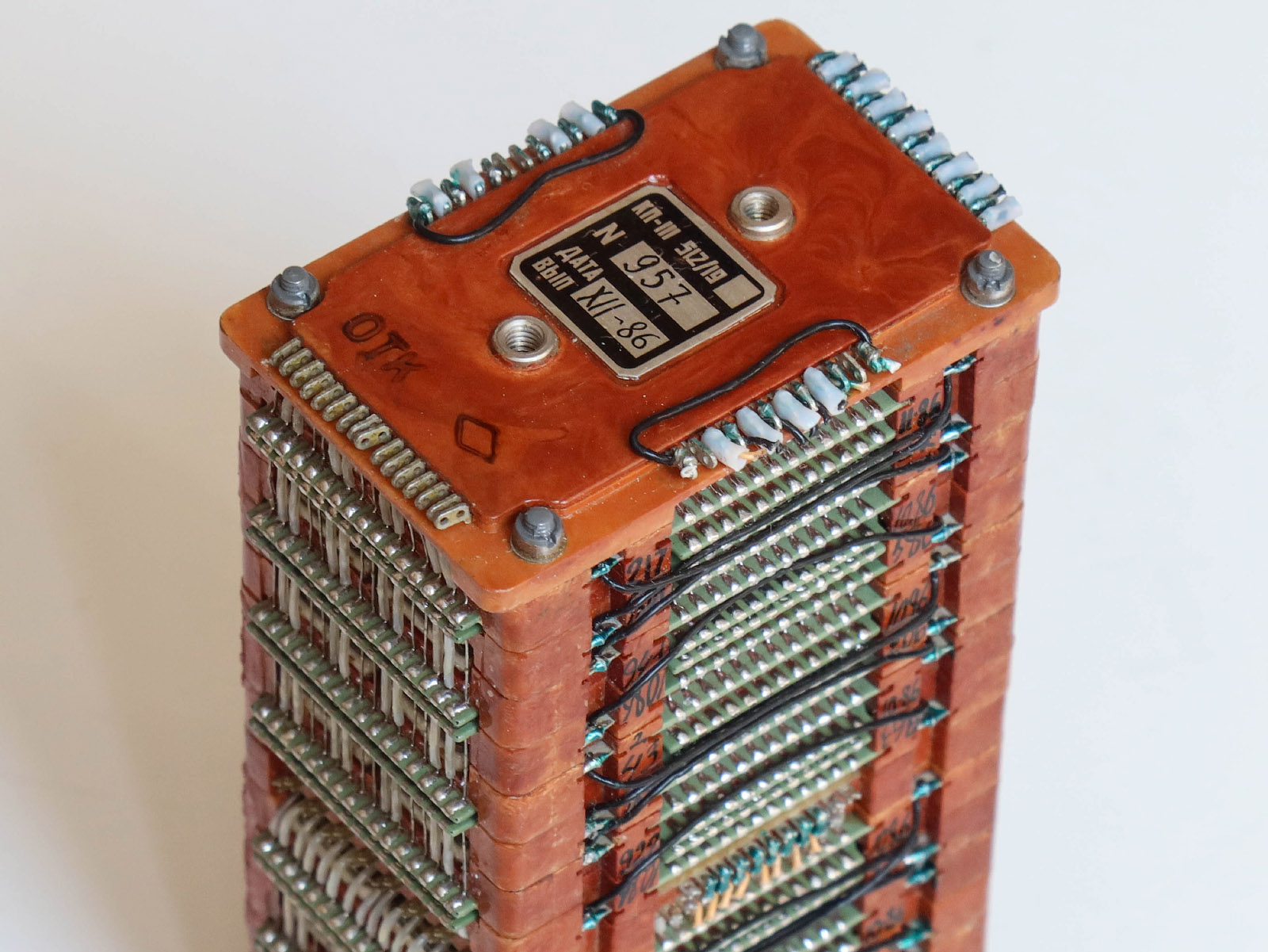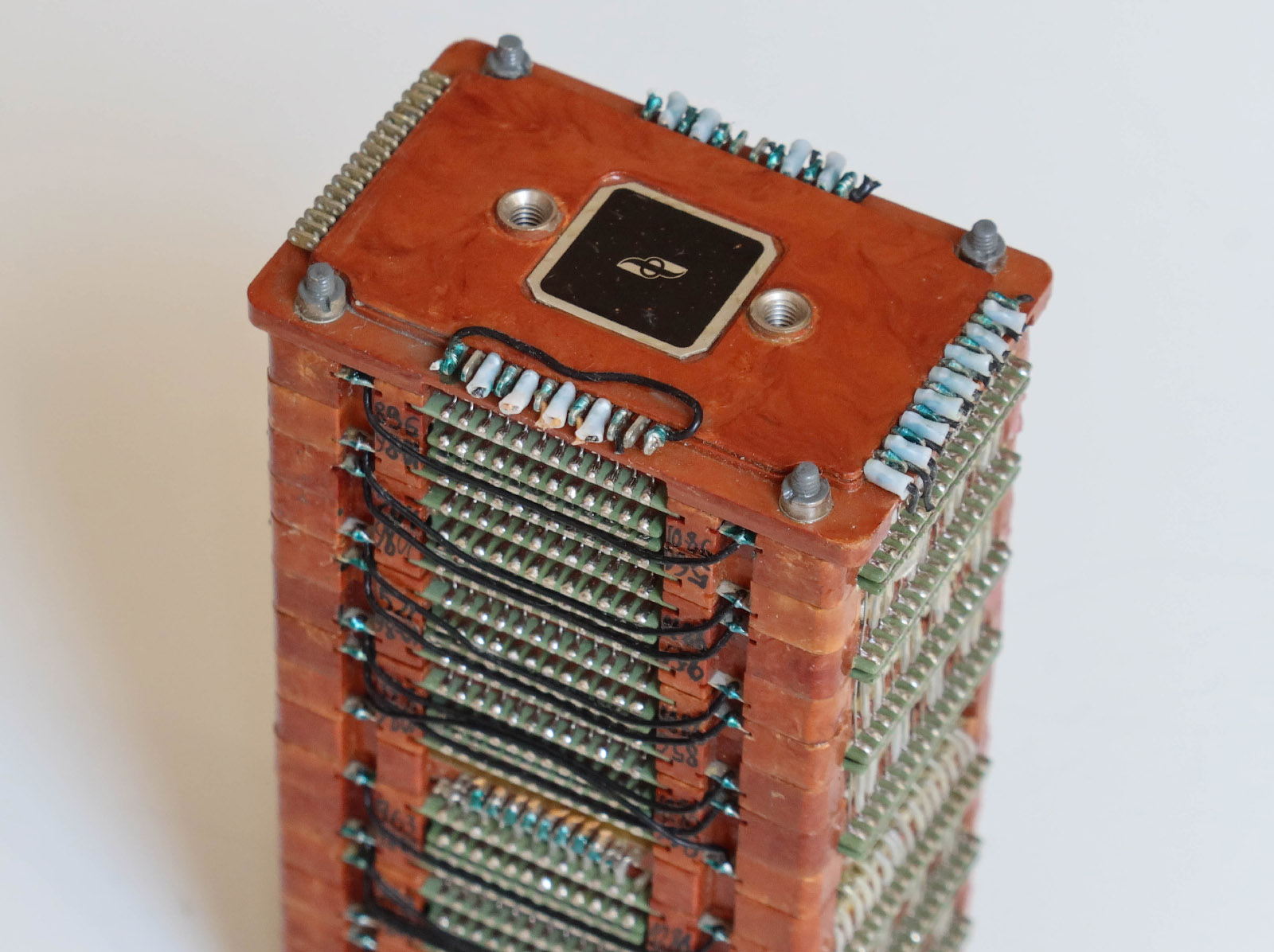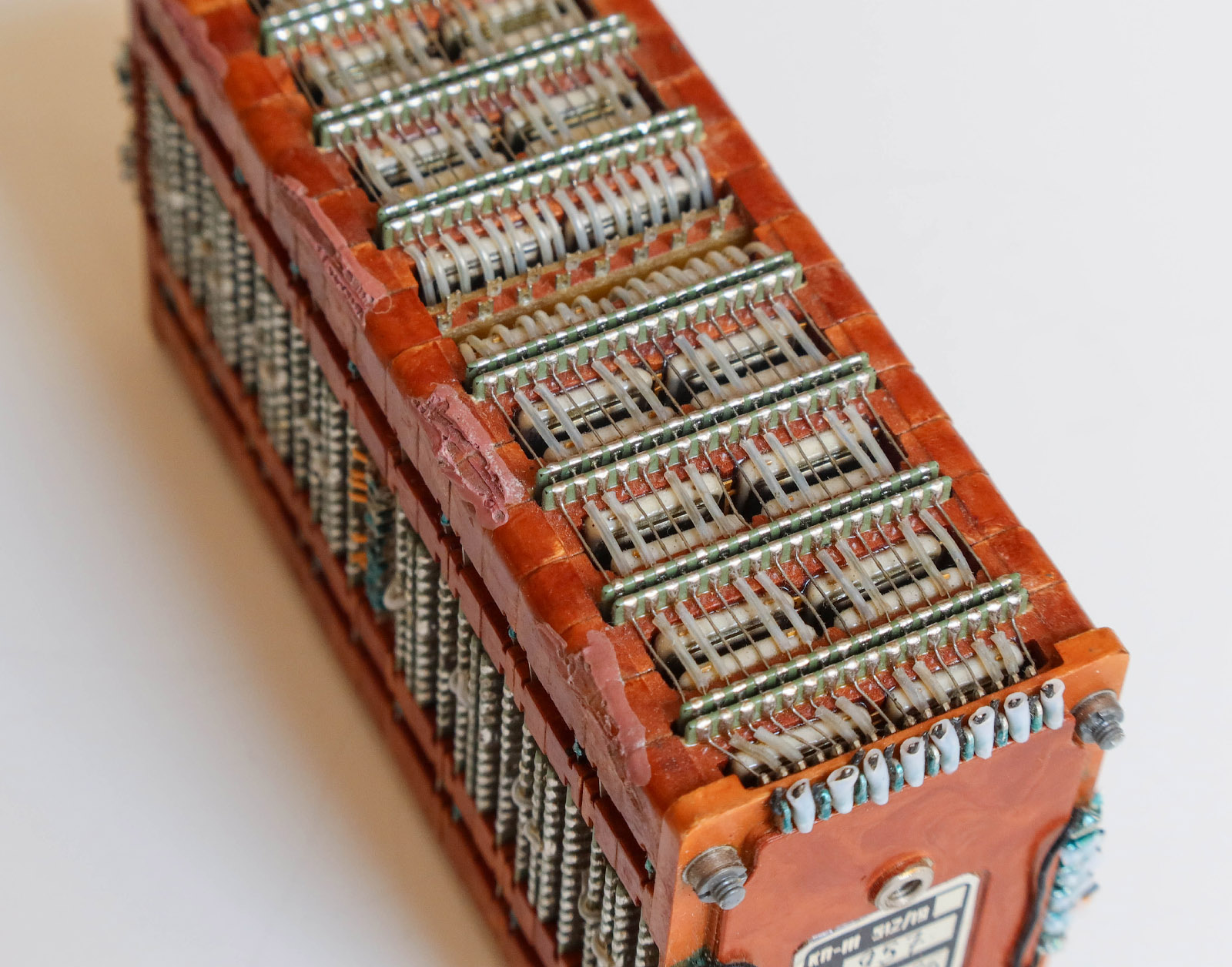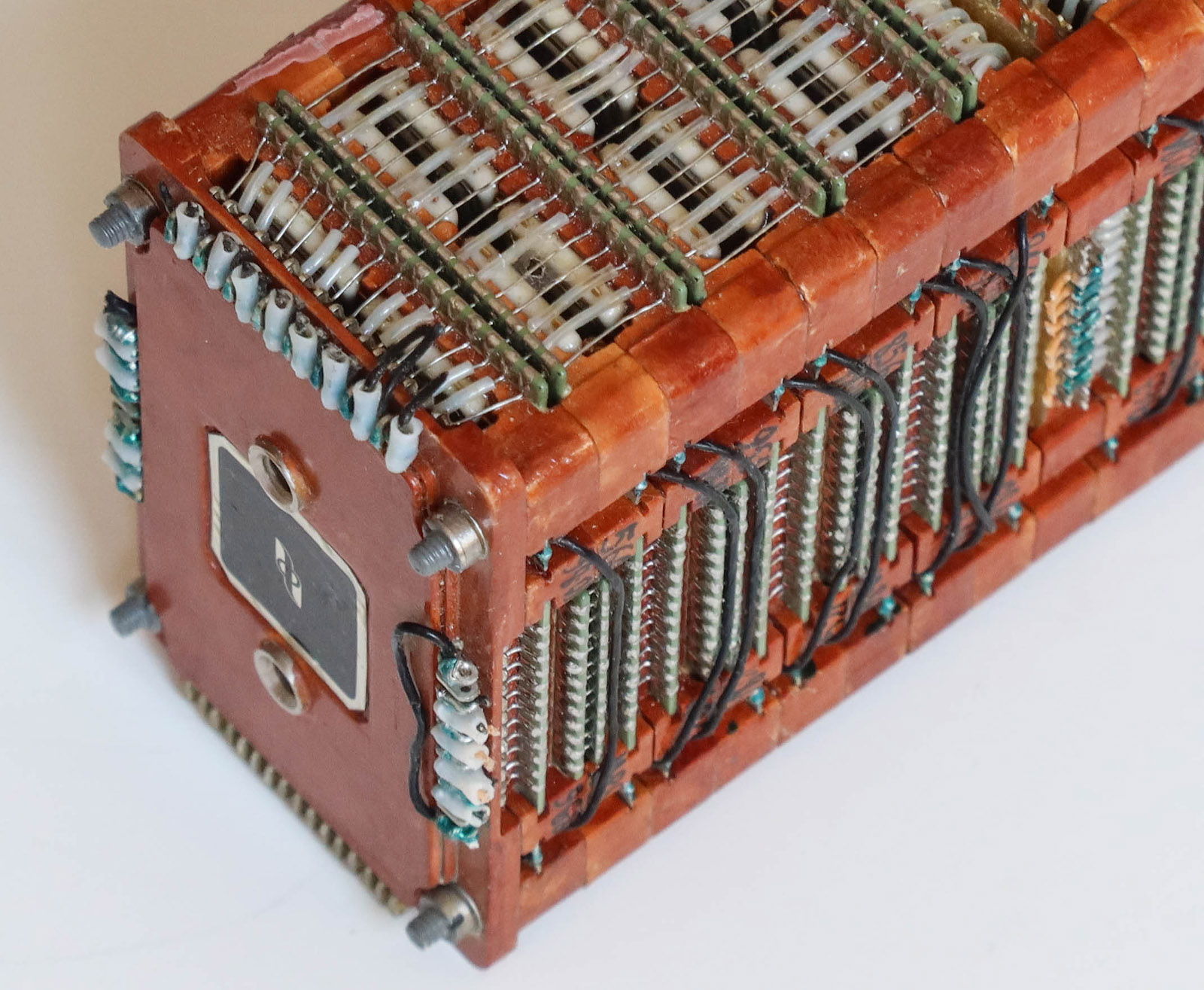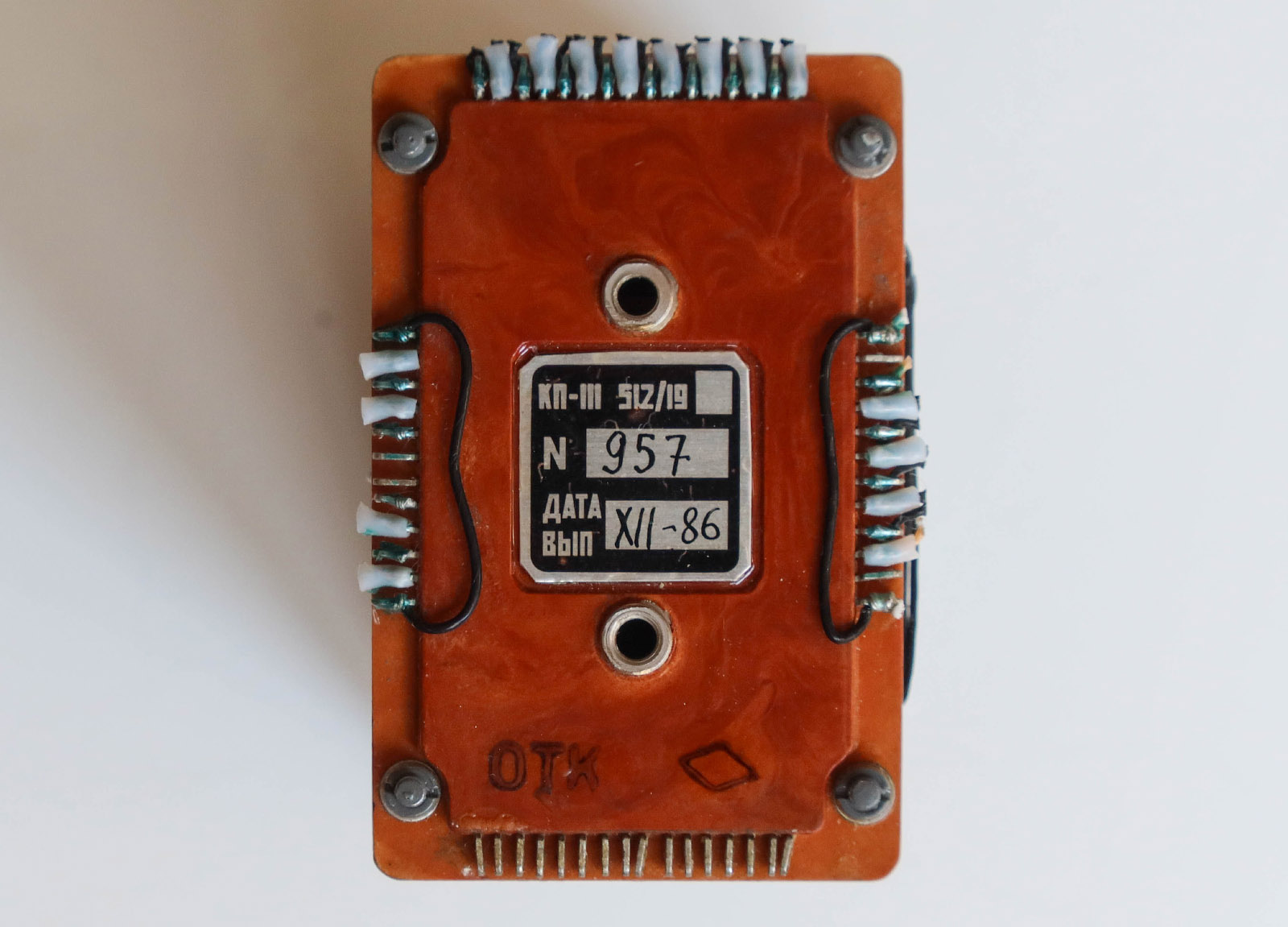KP-III-512/19 and KP-III-512/19B ferrite core memory cubes
Purpose and description
The KP-III-512/19 cube was developed in the mid-60s, in KB-2 of electronic equipment under the leadership of Philip Georgievich Staros. The cube was used, in particular, as the random access memory of the BVTs-20 computer from the "Orbita-20" mission computer.
Internal structure and specifications
KP means "Memory Cube", III (three) - model number, 512 capacity in words, 19 is bitness. The total capacity of the cube is 1216 bits. The design of the cube is a sequential assembly of 16 memory cassettes of the same type. Each cassette contains two diode decoder assemblies. Between them there are multi-hole ferrite plates (there are no rings in them) and the whole structure is filled with a translucent protective compound.
Additional information
There are at least two different designs of these cubes, differing in the cassette arrangement. In one of them, decoders are external from the cassettes and are visible from the ends, while in others they are built into the case. The photographs show two cubes of different designs, as well as a metal chassis with connection connectors. Cubes for 256, 128 and 64 words were also produced, differing only in the number of cassettes. Produces by Leningrad Design and Technology Bureau "Svetlana". Maked in 1978 (decoders are built into cassettes) and 1986 (external decoders).
Images (click to enlarge)
